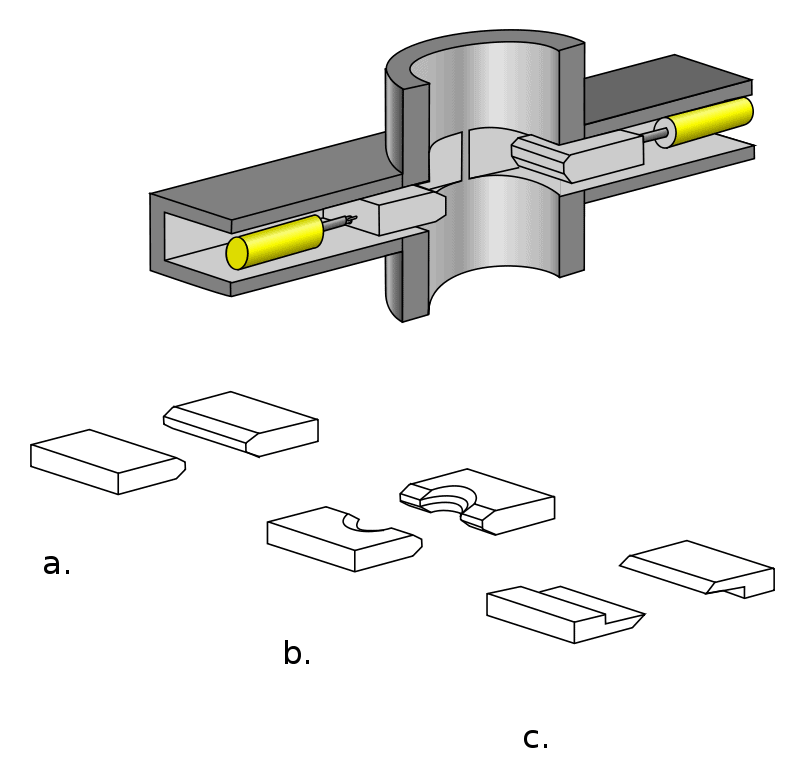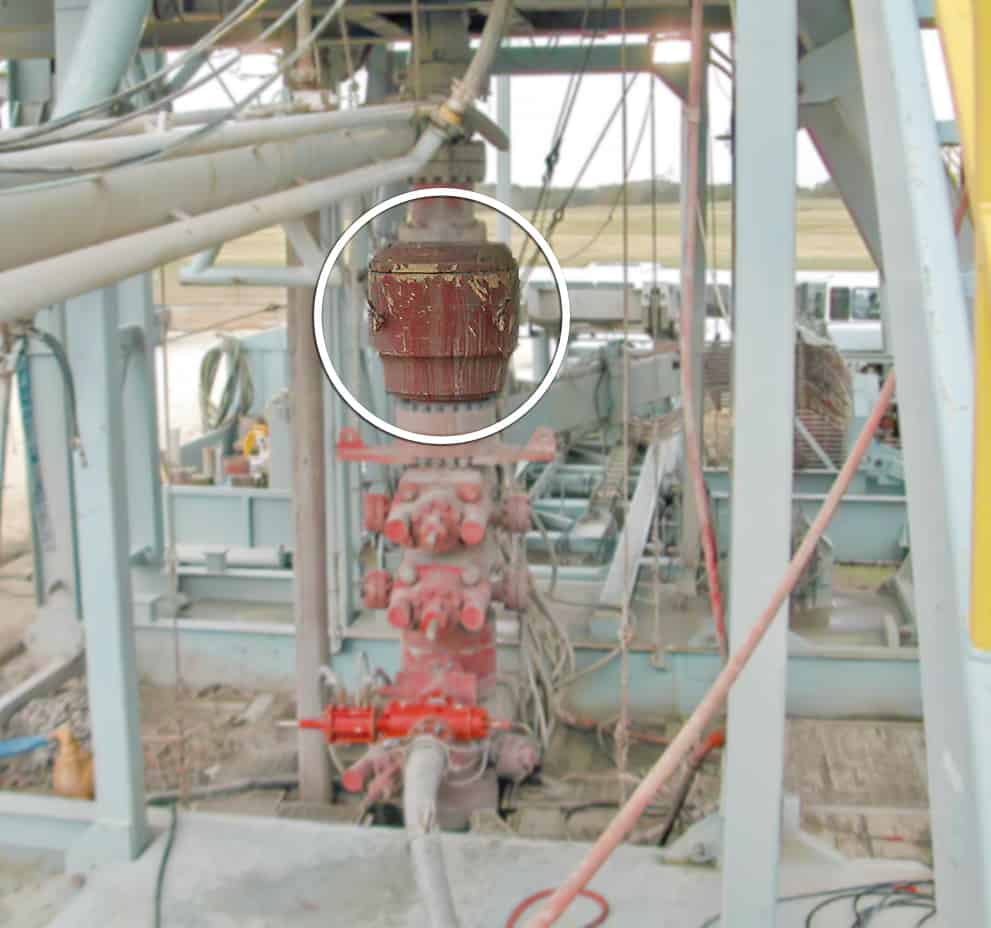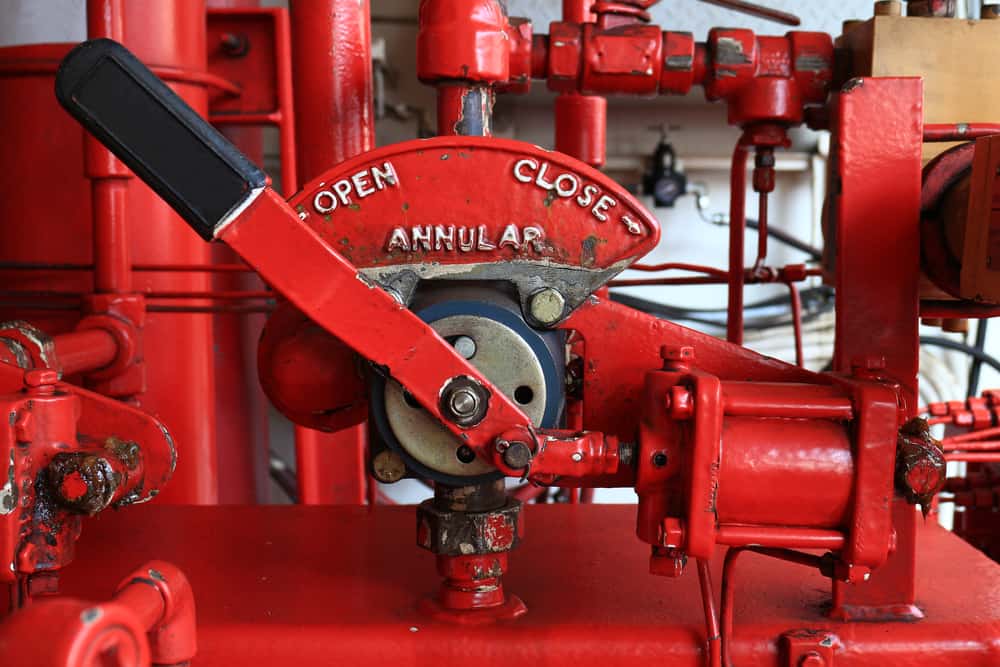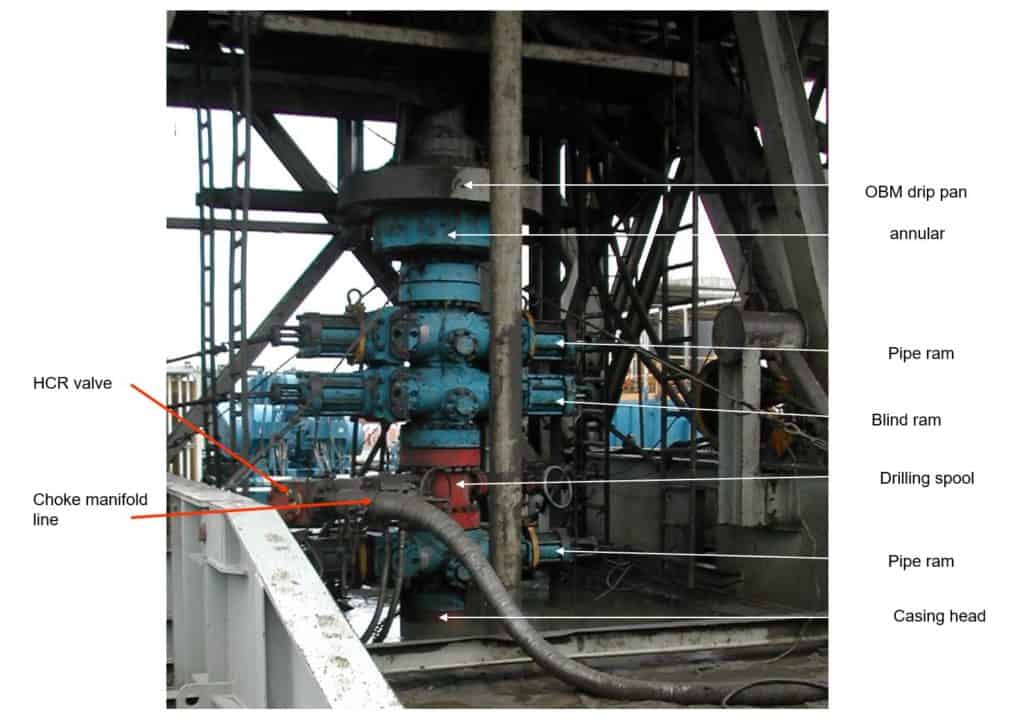The most prevalent categories of BOPs are a ram preventer and an annular preventer. BOP stacks frequently utilize both types, typically with at least one annular BOP stacked above several ram BOPs. Blowout preventers are used on onshore wells, offshore rigs, and subsea wells. Onshore and subsea BOPs are secured to the top of the wellbore, known as the wellhead. BOPs on offshore rigs may be mounted below the rig deck. Subsea BOPs are connected to the offshore rig above by a drilling riser that provides a continuous pathway for the drill string and fluids. In effect, a riser extends the wellbore to the rig.1Blowout Preventers. (June 3, 2021). In Wikipedia https://en.wikipedia.org/wiki/Blowout_preventer
Let’s take a look at types of ram preventers, and then the annular preventer.
Ram Preventers
The ram BOP was first brought to market by Cameron Iron Works in Houston in 1924.

Blowout Preventer diagram showing different types of rams. (a) blind ram (b) pipe ram and (c) shear ram.
Blind Ram
If there is no drill string, the blind ram is responsible for sealing the well.
Pipe Ram
The pipe ram seals around a drill pipe, restricting flow in the annulus between the outside of the drill pipe and the wellbore, but does not obstruct flow within the drill pipe. A pipe ram is not used if there is no pipe in the hole.
Shear Ram
This ram shears the pipe in the well and seals the wellbore simultaneously. It has steel blades to shear the pipe and seals to isolate the annulus after shearing the pipe. Shear-type ram BOPs require the greatest closing force. You may hear the shear ram referred to as a blind shear ram because once the pipe has been severed the rams should continue to close over the open hole.
Offshore the shear rams are required in case of an extreme emergency such as the vessel coming off station in a storm, or the marine riser parting, or a kick that cannot be controlled. This requirement ensures the well is sealed and no well or reservoir fluids can leak into the ocean.
Onshore the need is not as great since if a kick cannot be controlled the pipe rams and annular are supposed to do the trick. If there is no pipe in the BOP stack then the blind rams should work. There is less chance that the pipe needs to be sheared to secure the well. Obviously the rig is not connected by a marine riser and is unlikely to be surprised by a storm.
Annular Preventer
The annular BOP was invented by Granville Sloan Knox in 1946. Annular BOPs are typically located at the top of a BOP stack, with one or two annular preventers positioned above a series of several ram preventers.

A BOP stack with the annular preventer highlighted.

Manual switch for an annular preventer with clear markings for ‘open’ and ‘close’.
An annular BOP has a donut-like rubber seal reinforced with steel ribs. When a piston is actuated, its upward thrust forces the unit to constrict around the drill pipe, sealing the annulus. Although the annular volume is sealed, drillers can still pump fluids into the well through the inside of drill pipe. This preventer can also seal the entire volume of the well when there is no pipe in the hole, but in this mode it is generally not as effective as ram preventers at withstanding well pressures.
BOP Stack
A BOP Stack will contain multiple preventers, as illustrated in the annotated photograph. Because shear rams are not required onshore, they are not part of this BOP Stack.

A BOP Stack with a number of components labeled. Notice the individual preventers, starting at the casing head with pipe ram, blind ram, pipe ram and annular preventer.
Image Credits
- BOP-Stack-annular-preventer: Paul Bommer
- 4-way,Valve,For,Annular,Bop,Closing,System,Unit,(koomey,Unit): Shutterstock
- BOP-stack-Paul-Bommer: Paul Bommer